Plantian life/trip in Okinawa / Ryukyu, the Japan's southernmost island like Hawaii
What is the image of Okinawa for a Japanese tourists/general people?
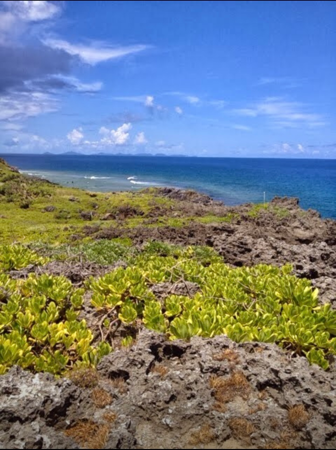
Blue OCEAN like a small Hawaii located in the southernmost of Japan
Many OLD PEOPLE, 100 years old centenarians
Unique Okinawan FOOD recently influenced by US junk food/military bases
However, these images are superficial mainly by tourists. The most tourists are simply led to the Northwest side beaches with non-Okinawan hotel chains, visit at tourish malls/restautrants/attractions, and talk with non-Okinawan immigrants who love Okinawa so much as to have moved. The tourist trips are far from the authentic, local and spiritual world of real/deep Okinawa.
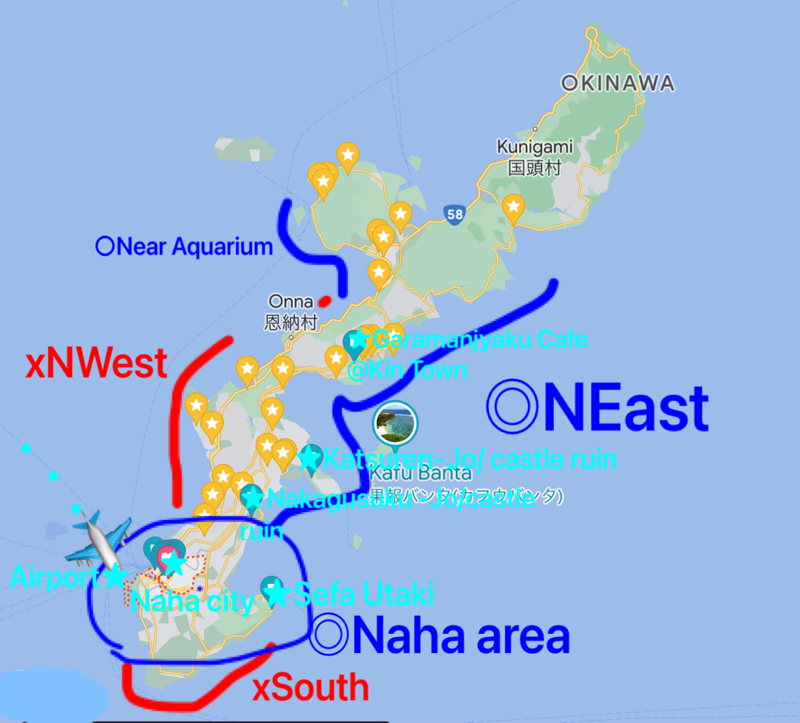
Map of Okinawa Main Island for
Local (○★Go)
vs
Tourists (XNot Go) areas
Welcome to this plantain world. We are plant loving-people who live with plants and nature. You are lucky to have found this site.
As one of the Plantians, I, Ms.S, love the nature & plants, and was born in one of Okinawa islands and seems to be a descendent of Ryukyu Kingdom era. She is also one of the enlightened psychics who are called as ‘YUTA’ in Okinawa and work as spiritual counselor for Okinawan people. She is currently living/working in Vancouver, BC, Canada where many psychic people are living like Okinawa. Both Okinawa and Vancouver are so close to the big mother nature that many people have resulted in becoming psychics who can see, hear and/or feel the natural spirits/gods beyond their five senses.
From the local and Plantian points of view, Ms S is happy to introduce you to the AUTHENTIC, LOCAL and SPIRITUAL trip of Okinawa and old Ryukyu Kingdom from the local points of view.
Okinawa is unique in Japan with the following four elements from the local point of views:
1) Wild NATURE with Typhoon in the neotropical and southernmost area of Japan
2) RYUKYU Kingdom that traded with China/the other Asia (1429-1879)
3) Close COMMUNITY to survive in the wild nature
4) LONGEVITY FOOD/DIET to have many 100+ years-old centenarians
If you would like to see and feel this real/deep Okinawa, let’s try to experience in these four elements by seeing, eating, and communicating with local people.
ーーーーーーーーーーーーーーーーー
THINGS TO DO LIST:
- SEEING of ① wild Nature & ② Ryukyu cultural world heritages
- EATING of ④ longevity food by communicating with ③ the local people
- SHOPPING & EXPERIENCE via ③ communication with the local artists/shops
ーーーーーーーーーーーーーーーーー
NOTE: Plantians vs Vegan food choices
We, plantians are 80-100% plant-based vegetarians/flexitarians but not strict vegan. We love plants and plant-based local food even it contains fish/meat. Okinawa uses lots of Bonita (fermented dried tuna) flakes/broth and pork meat. Real pork meat is fine, but be careful of ‘Pork’ called in Okinawa means canned spam sausages with lots of chemicals. The spam ‘pork’ meat has become so popular as cheap meat substitutes in Okinawa due to American military bases after the war. You could find and possibly enjoy some as ‘Pork Tamago with rice’ that is almost same with Spam rice ball in Hawaii.
If you are 100%vegan, Okinawa and Japan except Tokyo are difficult places in finding local vegan food. Japanese authentic food is 80-90% plant-based with Tofu/soy protein and sea vegetables and some fish/selfish as shown in Sushi/Sashimi. You can avoid fish/meat, but difficult in avoiding Bonita (dried fermented tuna) flake broth and meat broth that you cannot see in your plates/bowls. You can go to ‘vegan restaurants/cafes but these are not authentic but influenced by the Western boom/trend of veganism.
1. SEEING of ① wild Nature & ② Ryukyu cultural world heritages
Ms.S recommends the following three places within 1 hour drive from the capital Naha city of Okinawa prefecture and have a great nature views of the Okinawa main island. These places have old castle ruins and/or places to pray by female medium since Ryukyu Kingdom era. You may feel the Okinawan nature gods and the old Ryukyu souls/eras.
★When you can see the blue sky in Okinawa,
Rent a car from the airport, then drive to visit at the 9 Cultural World Heritages especially, these three spots.
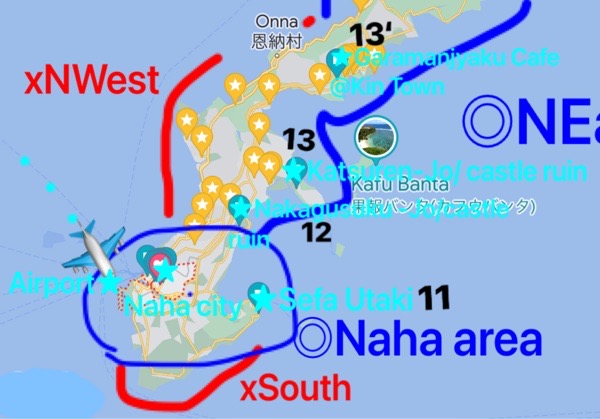
11) Sefa Utaki (the natural shrine with big rocks in the forest) / 40 min drive from Naha
12) Nakagusuku-jo Site (castle ruins with bird views)
13) Katsuren-jo Site (castle ruins with bird views) / 40 min drive
+
13’)Garamanjaku Cafe, if possible on Sat/Sun/Mon open only with reservation / around 1 h drive
(See Ms. S’s customized Google map)



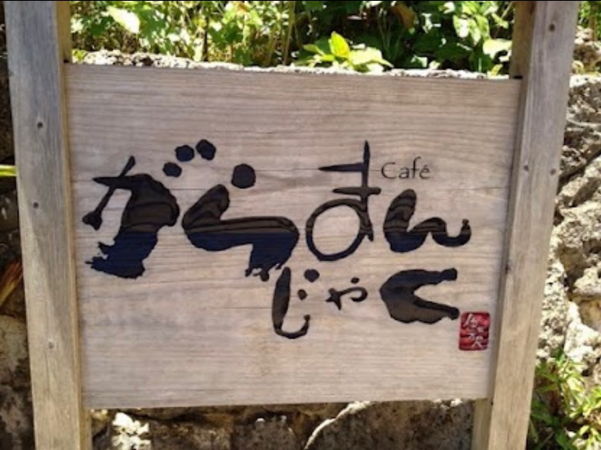
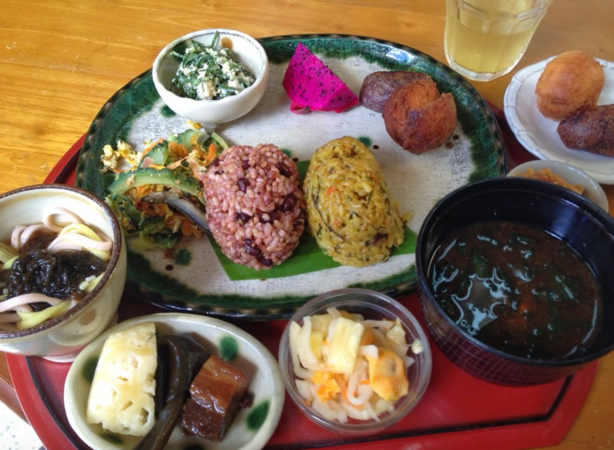

Ms S recommends these three of the 9 heritages because these are close to Naha city within 1-1.5h drive and because of the great and unique views with strong nature energies. The Okinawan heritages are like vortexes of Sedona, US, swirling centers of the nature gods’ and land energies to heal and energize us (if you believe in the energies). If you don’t like the spiritual/gods, you could still feel and enjoy the healing air from the wild neotropical nature and the 150-600 years old histories of Okinawa/Ryukyu.
★If the weather is not good or you prefer to check first in your lodging in the Naha city centre,
I recommend you to head to
22) Noren Plaza building on the south side of the Kokusai Main Street as shown with the green circle/letters below.
By a rental car, you can park there for 1 hour free and for quick eat / take-away deli for drive. By car, it is easy to drive there from the airpot because it is a bit far from the tourist crowds at Kokusai St/Makishi market.
By public transportation, take Yui Rail (mono rail) to the Makishi station and walk for 10 min.

Kokusai Street is the main and famous shopping street, but it is mainly for tourists.
Ms S prefers to go to the long arcade streets and small paths on the south of Kokusai street for historical markets and small local shops/cafes to meet and talk with local people.

2. EATING of ④ longevity food by communicating with ③ the local people
★When you are driving and feel hungry for quick eat,
21)Search and drive to a nearby ‘Shoku-do’ (食堂)and/or ‘Okinawa Soba with no MSG/chemicals’ for quick and chap eat of home-style meals.
Choose a Shoku-do with lots of local cars/people, avoiding tourists’ rental cars with わor れ Hiragana letters on the plates. If you would like, try to ask one of local- and middle-aged-looking people, saying ‘do you know any good ‘Shoku-do’ to eat?. Since Okinawa has American military base and English-speaking military-related Americans, many of the local people except old people don’t mind to be talked in English.
From the menu, try ‘Goya Champru’ and/or’ Tofu Champru’ with steamed rice.
‘Miso-shiru’ sounds like typical Japanese ‘miso soup’ as a side dish, but it is unique and main dish in Okinawa with lots of boiled vegetables/ingredients.

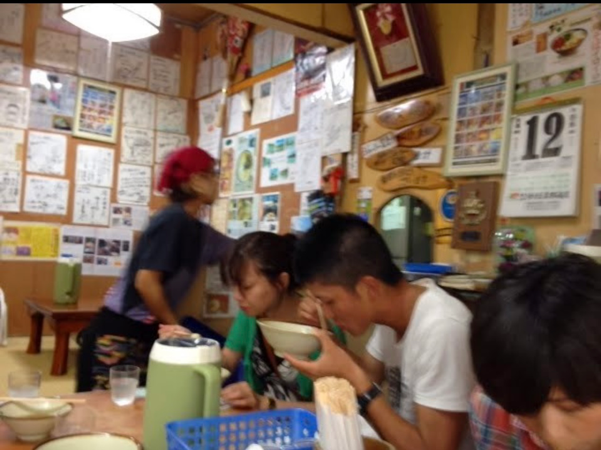
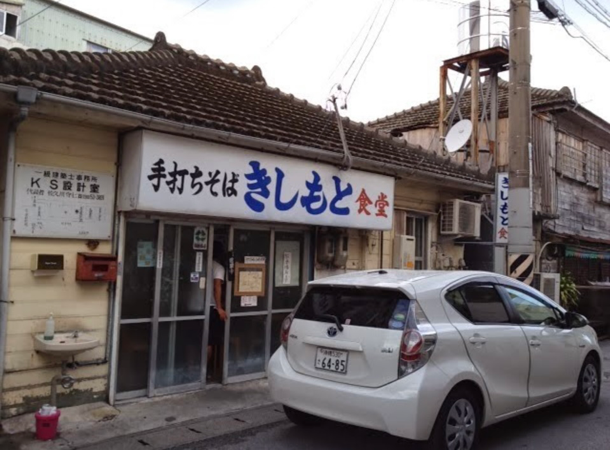
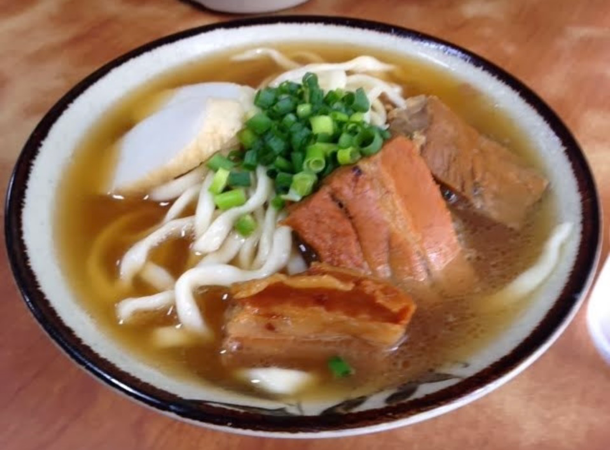
★When the weather was not good with rains and/or winds without seeing any parts of blue sky,
Go and walk around the SOUTH side of the Kokusai Main Street (see the above map of Naha center part) for shopping and visiting and eating at local markets.
Ms. S especially recommends the two local markets,
22) Noren Plaza and Farmers Market (best going from 10-15:00) : The both are in the same building and these have been authentic pre-war markets and was originally Plant-based market.
‘Noren’ in Japanese means farmers’ association, so the market is the Plant-based that we Plantians love, but also sell fish/sea vegetables and some meats. Noren Plaza is a new shopping mall building including the Noren farmers’ wholesale market with lots of local shops, chat eatery and take-away deli.
Noren plaza opens 24 hours but best for 10-15:00 because it contains a wholesale market to be active on early mornings and to be open to the public. You can buy fresh neotropical local fruits, mango, papaya, passion fruits, guava, etc for your breakfast.
23) Makishi ‘Meaty’ Market (recommended not inside but nearby shops) and Go-ya Tempura Ya
Makishi market used to be for the local, but now is a popular tourist place. Just for looking and walk around inside, but Ms S recommends the local small stores around the market and above Noren plaza for plant-friendly and for the local real Okinawa trip. There are many ‘home-style deli’ stores selling mama/granma-made food in plastic packs such as brown rice, Goya champru, Okinawan Temupra, etc. Ms S recommends special deli shops like:
23’)Goya-Tempra Ya for Tempura (Mozuku sea vegetable, Goya, Sweet potato are recommended) and Sata-Andagi (deep fried donuts, chose the brown sugar one).
Okinawan Tempura is not like Japanese traditional light Tempura but like Western fritters with heavy thick batter including eggs. Ms S usually prefer light Tempura, but in Okinawa, her body feels the thick heavy Tempura tasty in order to fight against high humidity and hot weather in Okinawa. Okinawan Tempura are sold anywhere, but try to go to Goya-Tempura Ya, then eat its fresh-from-the fried pot Tempura and Sata-Andagi in front of the shop. If your lodging is nearby, take-away and enjoy these with cold and local Orion beer.
24) Hanasho for Ji-mami-tofu (peanuts tofu): The other great local shop is Hanasho where two sisters are selling hand-crafted peanuts tofu at super-tiny shop, and you can eat it at the super-tiny chair/table there. It is super-tiny shop with long history, and the sisters energies are great and very authentic Okinawa.
The other food choices depending on the eating time are;
★BREAKFAST:
Noren Farmers’ market to buy tropical fruits, local deli and vegetables
25) Breakfast buffet at Okinawa Dai-ichi hotel (need to reserve from 2 months in advance ).
And/or Breakfast buffet at any your preferred hotels is fine, and it costs around 1000-2500 yen per person. The Okinawan hotel industry is so competitive that even cheap hotels offer wide assortment of buffet with Okinawa local ingredients/recipes. Ms S favorite is the morning buffet at Hyatt Regency Hotel Okinawa, but it is currently open only to the hotel guests.
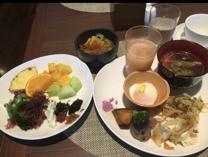
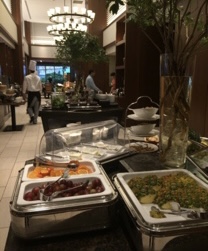
★LUNCH:
26) Kintsubo Shoku-do:
near Noren Plaza in the Naha center is a hidden gem and vegan-saver! It is Taiwanese vegan Bento cafe, and you can eat in and/or take away its bento box around 1000 yen. Despite Taiwanese immigrant owners, their taste/ingredients are close to Okinawan local without Bonita fish frakes/broth and meat. It is located in a tiny hidden path, but if you are lucky and good at using google map, you could find it.
27) Okinawa Soba (or SUBA by some local people):
After filling breakfast buffet /meal, you are ready to drive out of Naha center, Okinawa Soba is the good choice and must eat as the most popular Okinawan food for both local and tourists. Okinawa Soba actually has no Soba(buckwheat) but is made of wheat, like Udon, but the method to make is same with Ramen/Chinese noodles. Okinawa Soba looks Udon with clear bonita fish/meat broths, taste Ramen noodles, and the toppings are mixture of Ramen and Udon with real and thick port meat toppings. In Okinawa, Okinawa soba is so popular that Udon and Japanese world-famous Ramen are not popular in Okinawa. Okinawa soba is not for vegan, but if you like Ramen/Udon and other Asian noodle soups, try it once.
There are many famous Soba shops, but Ms S uses simple criteria to choose the good shops: no chemicals including MSG, and chose shops with lots of local people, avoiding tourists’ rental cars. Famous shops are fine, but unknown Shoku-do often serves great non-chemical tasty soba.
28) Garamanjyaku Cafe in 1-1.5 hour drive to the north:
If you would like know the longevity secret of Okinawans, and happen to stay on Sat/Sun/Monday in Okinawa, try to drive to Garamanjyaku Cafe for reserved Lunch set (reservations are required). The cafe is located in the middle of Okinawa main island, and is good to combine the lunch with drives to 13) Katsuren-jo or 12) Nakagusuku-jo heritage sites.
Garamanjyaku uses authentic house of Okinwa/Ryukyu style, and the owner Kiyoko (and her daughter) is a typical female leader of the local community. Such lady is called, Mom for the local community, serving great food not only for her family but also for all community people. Kiyoko cannot speak in English, however, her cafe attracts lots of Asian repeaters from Thai, China, Singapore, etc via words-of-mouth by health/longevity enthusiasts. Her cuisines are 80% authentic and 20% modernized/her original with no chemicals but natural coloring like local turmeric. It is not vegan but 70-80% plant-based.
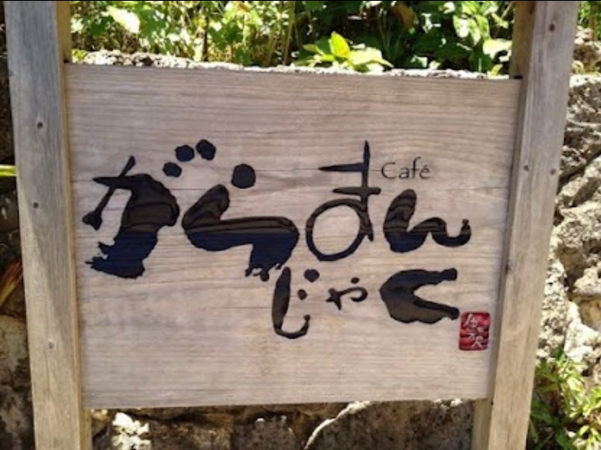
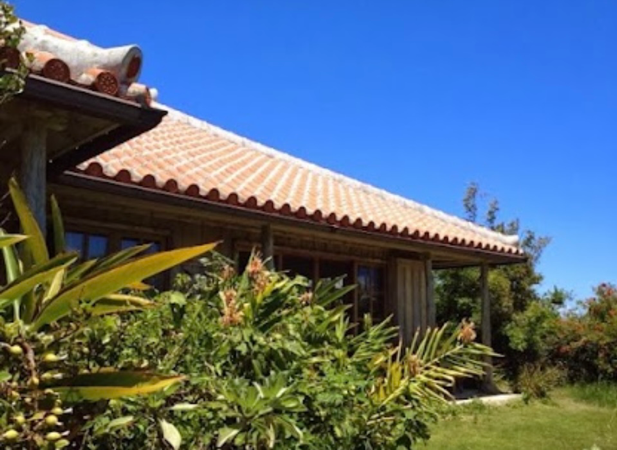
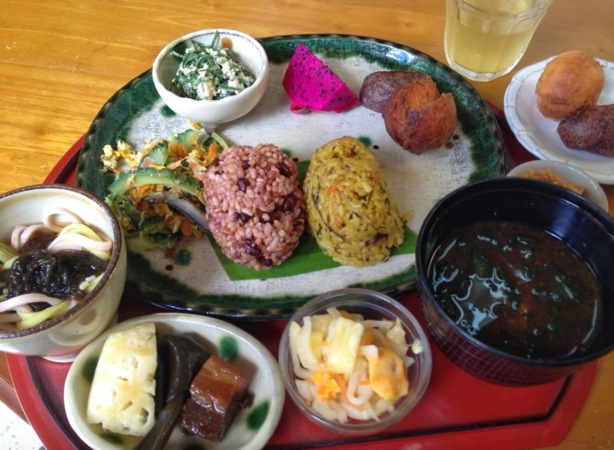
★ DINNER: There are not good authentic ‘restaurants’ that the local repeatedly go because many big/new restaurants are for tourists and/or for the Japanese immigrants from Tokyo or NON-Okinawa areas. Therefore, try Izakaya or bar areas with Okinawan local food in small portion and local music (Shima-uta) lives.
Google under the word of ‘Izakaya’ . Ms S likes
29) Sakae Market (after 18:00) where local young people drinks and eat at dumpling stands, and small bars. Since the place is dark and too local, foreign visitors may be afraid to go, even though Japan/Okinawa is safe. If you have any Japanese-speaking friends, ask them to bring you to the place.
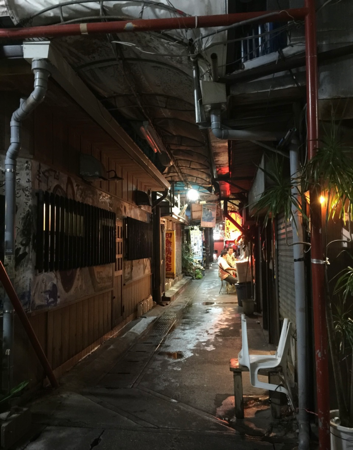
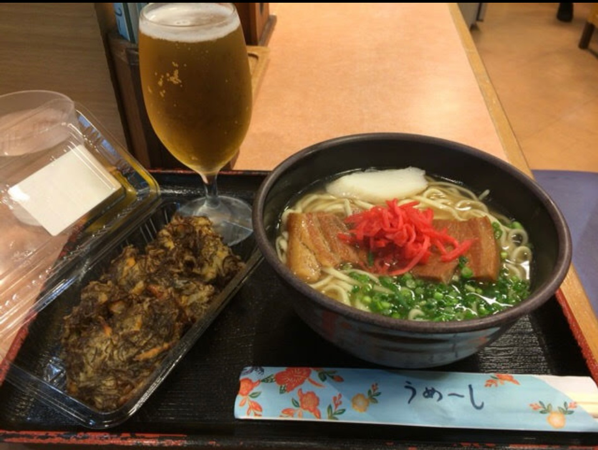
★Sweets, Snacks, and local liquors:
Tempura of Mozuku (Sea vegetable), Goya Tempura (See the above Goya-Tempura-Ya section)
Sata-Andagi with brown sugar (no white sugar/no eggs are authentic)
Orion beer is Okinawa dominant local beer / Awamori is local strong liquor)
Zenzai (Red bean paste under shaved ice in hot Okinwa)
30) Kippan at Jyabana Kippan shop: Okinawa orange sweets made for Ryukyu Kingdom family. The shop has long history, and tries to sell ‘water-melon version’ but chose the authentic ‘orange’ one. It is tiny and expensive, but enjoy the long history and Ryukyu heritage feelings.
3. SHOPPING & EXPERIENCE via ③ communication with the local artists/shops
Okinawa has many unique local crafts and souvenirs, so Ms S has selected the following ones which is ARTISTIC but PRACTICAL to use, for which the high-level ARTISTS to be selected as Japan National Treasure exists, and of course, which are authentic, local and spiritual.
★3 CRAFTS with Japan National Treasure artists:
31) Fablic of Bingata
32) Pottery of Tsuboya-yaki
33) Shima-uta music with Sanshin
★Shopping & Souvenirs;If you need some souvenirs
Above 30) Kippan jyabana
31) Washita Shops at the airport and Kokusai st are select shops of Okinawa goods/food. They even have a shop in Tokyo. If you go there, you can buy many variety of shared sweets and souvenirs except the recommended local food/shops in this blog.


